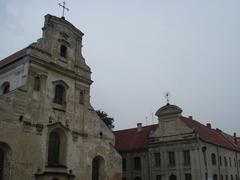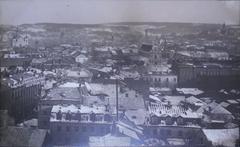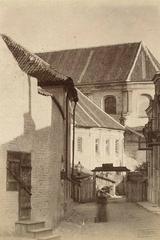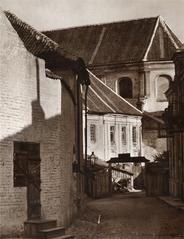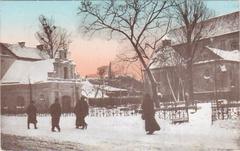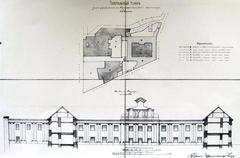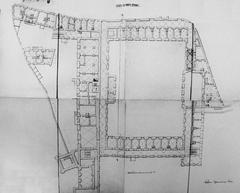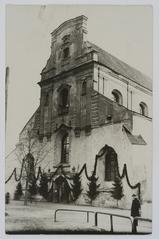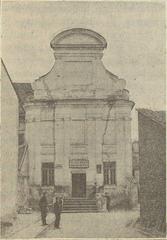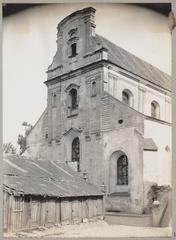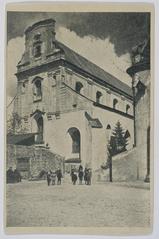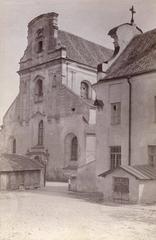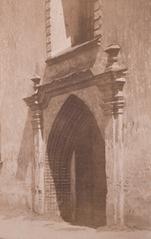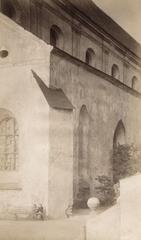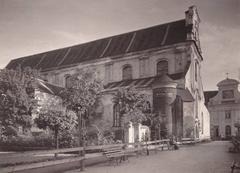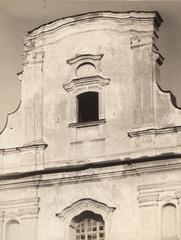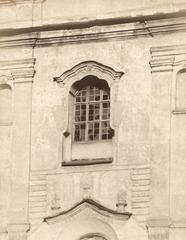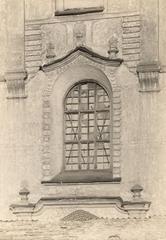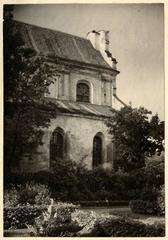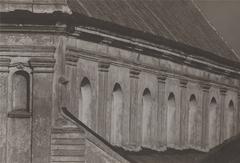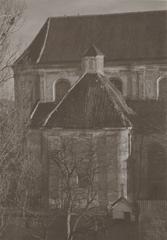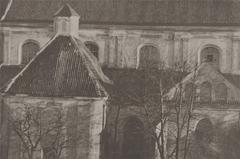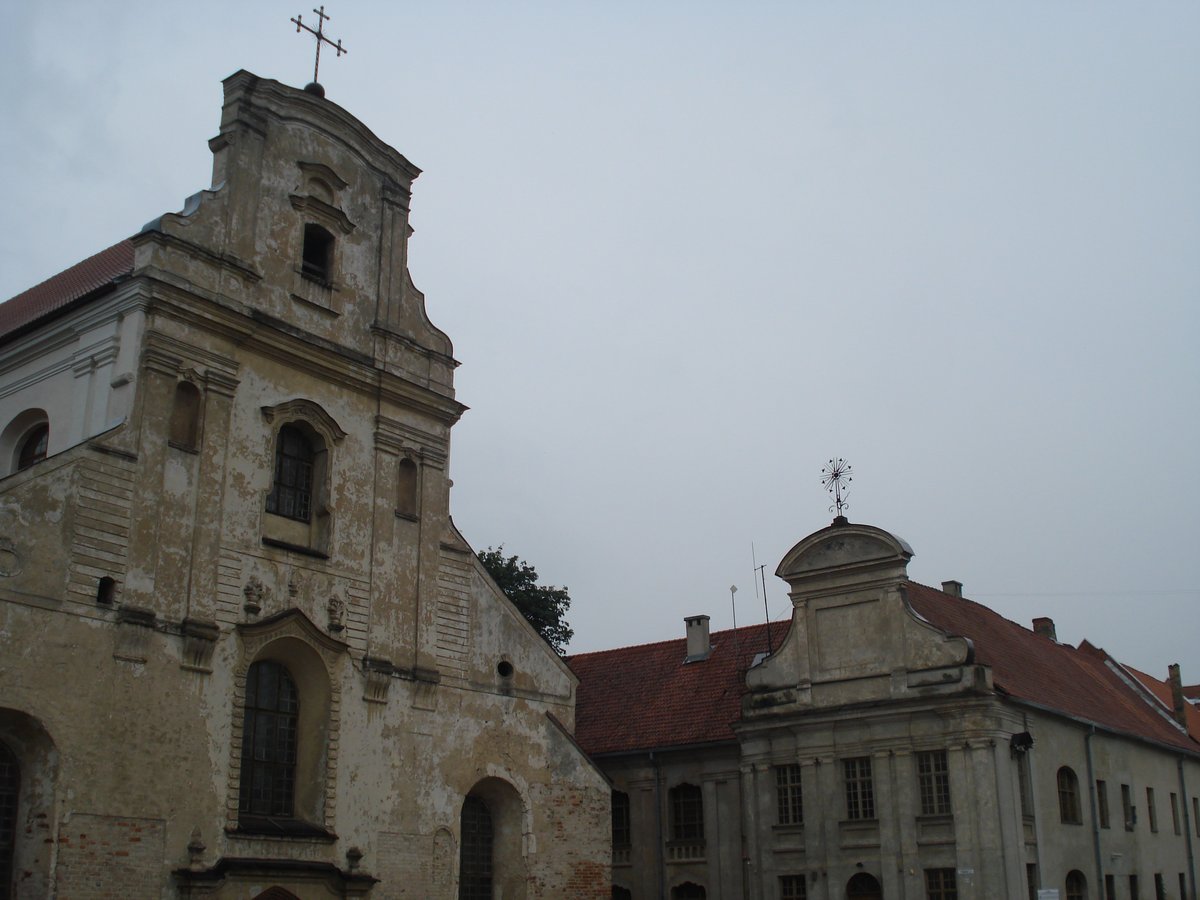
Church Of The Assumption Of The Blessed Virgin Mary, Vilnius
Church of the Assumption of the Blessed Virgin Mary, Vilnius: Visiting Hours, Tickets, and Historical Significance
Date: 14/06/2025
Introduction
The Church of the Assumption of the Blessed Virgin Mary in Vilnius stands as a profound testament to Lithuania’s enduring Catholic heritage, architectural evolution, and deep Marian devotion. Located in the heart of Vilnius Old Town—a UNESCO World Heritage Site—this Gothic masterpiece has witnessed over six centuries of religious, cultural, and historic transformation. Originally established by Franciscan friars in the early 15th century, the church is celebrated for its blend of Gothic foundations, later Renaissance and Baroque enhancements, and its role as a vibrant center for faith, especially during the annual Feast of the Assumption on August 15th.
This detailed guide provides an in-depth exploration of the church’s history, architectural features, religious and cultural significance, and essential visitor information, including opening hours, tickets, accessibility, guided tours, and nearby attractions. Whether you are a pilgrim, history enthusiast, or tourist, the Church of the Assumption is an unmissable highlight in Vilnius (Catholic Share, rel-tour.com, True Lithuania).
Contents
- Historical Overview
- Origins and Foundation
- Architectural Evolution
- Religious and Cultural Significance
- Notable Events and Restoration
- Visitor Information
- Opening Hours & Tickets
- Guided Tours & Accessibility
- Location & Getting There
- Travel Tips
- Nearby Attractions
- Frequently Asked Questions (FAQ)
- Conclusion and Travel Resources
Historical Overview
Origins and Foundation
The Church of the Assumption was founded by Franciscan friars soon after Lithuania’s official Christianization in 1387, with the first wooden structure completed by 1421. This early church signaled the consolidation of Catholicism in Vilnius and the growing devotion to the Virgin Mary prevalent across Europe at the time (Catholic Share).
Architectural Evolution
Gothic Beginnings:
The original structure, built in 1421, embodies classic Gothic architecture with its pointed arches, ribbed vaults, and slender brick columns. Its triple-nave layout and rectangular plan echo early Lithuanian ecclesiastical design.
Renaissance and Baroque Transformations:
Major reconstructions in the 16th–18th centuries introduced Renaissance and Baroque elements, notably ornate altarpieces, gilded sculptures, and intricate stucco work. The main altar—dedicated to the Assumption—became a focal point, blending artistic grandeur with spiritual reverence (Divine Narratives).
Modern Restorations:
Wars, fires, and the Soviet era left scars on the church, but dedicated restoration efforts in recent decades have focused on masonry stabilization, fresco conservation, and the careful revival of original decorative elements (inyourpocket.com).
Religious and Cultural Significance
Marian Devotion and the Assumption Feast
The church is a central site for Marian devotion in Vilnius. The Feast of the Assumption (August 15th) draws large crowds for solemn Masses, processions, and the blessing of herbs and flowers—a tradition blending Christian and Lithuanian folk customs (Munificentissimus Deus, Catholic Culture).
Role in Vilnius’ Multicultural Landscape
Situated among a mosaic of Catholic, Orthodox, Protestant, and Jewish heritage sites, the church exemplifies Catholic resilience and interfaith respect throughout Vilnius’s complex history.
Notable Events and Restoration
- Survival Through Turmoil: The church endured fires, wars (notably the Swedish invasion and Napoleonic Wars), and Soviet suppression. During Soviet rule, it became a beacon of spiritual resistance until its restoration after Lithuania’s independence (Catholic.com).
- Artistic Heritage: The church houses notable religious paintings, sculptures, and liturgical objects. It is also a venue for sacred music, contributing to Vilnius’s cultural life.
- Franciscan Monastery Ensemble: Adjacent to the church, the monastery complex blends Gothic and Baroque styles and has served various roles, including as a warehouse during the Soviet era (rel-tour.com).
Visitor Information
Opening Hours & Tickets
- Monday–Saturday: 10:00 AM – 6:00 PM
- Sunday: 12:00 PM – 6:00 PM
- Admission: Free for general entry and worship (donations appreciated). Guided tours and special exhibitions may require tickets (€3–€7).
Guided Tours & Accessibility
- Guided Tours: Available upon request, in multiple languages. Audio guides can be rented on-site.
- Accessibility: Wheelchair accessible via ramps at the main entrance. Some historic areas may have limited access.
Location & Getting There
- Address: Trakų 9-1, Vilnius Old Town
- Access: Easily reachable on foot from Vilnius city center; nearby public transport stops.
Travel Tips
- Visit early or late in the day for a quieter experience and better photography lighting.
- Modest dress is required; silence is appreciated during services.
- Check for special events and extended hours during the Feast of the Assumption.
Nearby Attractions
- Vilnius Cathedral
- Gediminas Tower
- Saint Anne’s Church
- Užupis District
- Bernardine Garden
All within walking distance, these sites complement a visit to the Church of the Assumption and provide a rich cultural itinerary.
Frequently Asked Questions (FAQ)
Q: Are there entrance fees?
A: General admission is free; donations are welcome. Guided tours or exhibitions may have fees.
Q: What are the visiting hours?
A: Monday–Saturday 10:00 AM–6:00 PM, Sunday 12:00 PM–6:00 PM.
Q: Is the church accessible?
A: Yes, with ramps at the main entrance; some older areas may have limited access.
Q: Are guided tours available in English?
A: Yes, guided and audio tours are offered in multiple languages.
Q: Can I take photos inside?
A: Photography is generally allowed, but flash/tripods may be restricted and respect is required during services.
Q: When is the Feast of the Assumption celebrated?
A: Annually on August 15th, with special liturgical events and processions.
Conclusion
The Church of the Assumption of the Blessed Virgin Mary in Vilnius is more than a historical monument—it is a living symbol of Lithuania’s religious and cultural identity. With its unique architectural synthesis, centuries-old Marian traditions, and central location in Vilnius Old Town, the church offers a meaningful experience for visitors of all backgrounds.
Plan your visit to explore this remarkable site, attend a service or guided tour, and immerse yourself in the spiritual and historical heart of Vilnius. For more travel insights and updates, download the Audiala app and stay connected with official tourism resources.
Sources
- The Assumption of Mary: History and Significance — Catholic Share
- Franciscan Monastery and Church of the Virgin Mary Assumption, Vilnius — rel-tour.com
- The Assumption of the Blessed Virgin Mary — Opus Dei
- Vilnius: What to See, Where to Go, and What to Know — True Lithuania
- The Assumption of Mary in History — Catholic.com
- Vilnius Historic Centre UNESCO World Heritage Site — Vilnius Tourism
